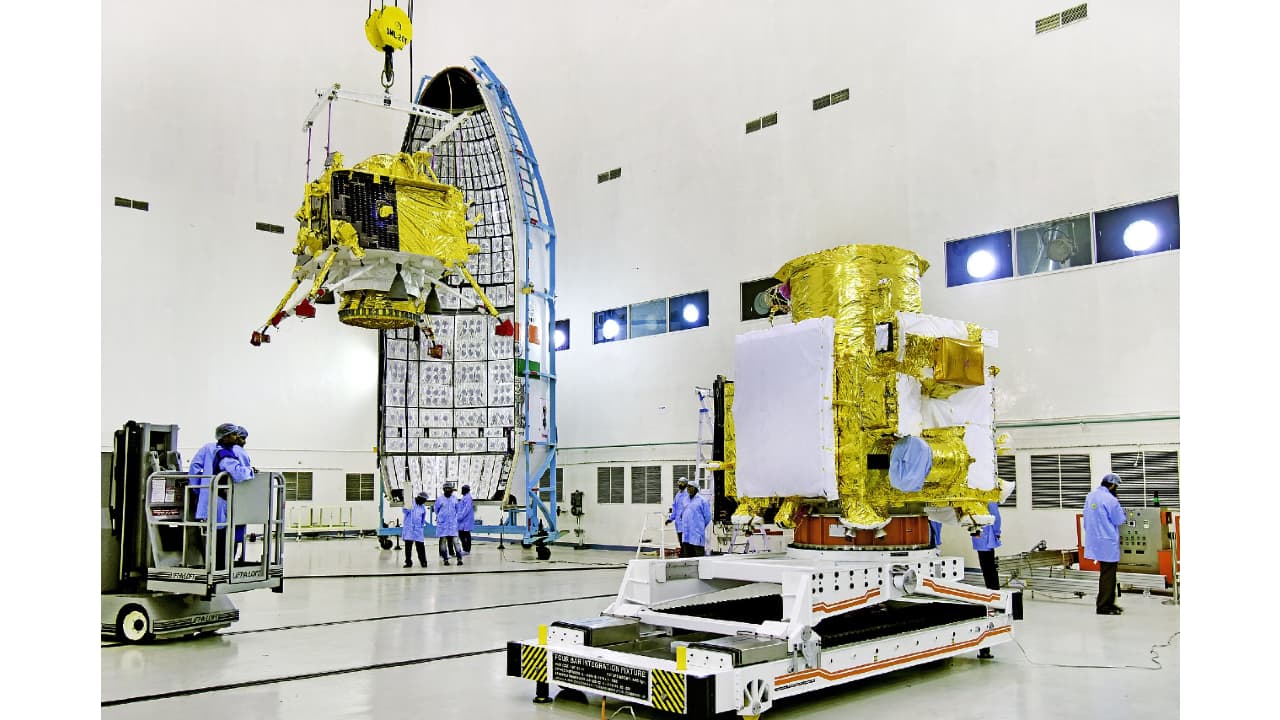
News
November 09, 2025
ISRO collects advanced Chandrayaan-2 data to aid study of Moon’s polar regions
The space agency said the polar mosaics include key radar parameters that reveal the physical and electrical (dielectric) characteristics of the Moon’s surface and subsurface
**ISRO Collects Advanced Chandrayaan-2 Data to Aid Study of Moon’s Polar Regions**
The Indian Space Research Organisation (ISRO) has announced the successful collection of advanced data from its Chandrayaan-2 mission, which will significantly contribute to the study of the Moon's enigmatic polar regions. This wealth of information, gathered by the Orbiter High Resolution Camera (OHRC) and other instruments aboard the Chandrayaan-2 orbiter, focuses on creating detailed mosaics of the lunar poles.
These polar mosaics are not just pretty pictures; they contain critical radar parameters that unlock valuable insights into the Moon's surface and what lies beneath. Specifically, the data reveals the physical characteristics of the lunar terrain, such as its roughness and topography. More importantly, it sheds light on the electrical (dielectric) properties of the lunar surface and subsurface. Dielectric properties describe how a material responds to an electric field, and analyzing these properties allows scientists to infer the composition and structure of the lunar soil, also known as regolith.
The data collected is especially crucial for understanding the permanently shadowed regions (PSRs) near the lunar poles. These areas, untouched by sunlight for billions of years, are believed to harbor significant quantities of water ice, a resource that could be vital for future lunar missions and even long-term lunar habitation. By analyzing the radar data, scientists hope to better understand the distribution, concentration, and form of this water ice.
ISRO's meticulous data collection and processing efforts are paving the way for a more comprehensive understanding of the lunar poles. The information obtained from Chandrayaan-2 is not only valuable for scientific research but also crucial for planning future lunar exploration missions. It provides a detailed map of the lunar terrain, including potential landing sites and resource locations. Furthermore, understanding the dielectric properties of the lunar regolith is essential for developing technologies that can effectively extract and utilize lunar resources. The Chandrayaan-2 mission, although its lander didn't achieve a soft landing, continues to provide invaluable data, solidifying India's role as a key player in lunar exploration.
The Indian Space Research Organisation (ISRO) has announced the successful collection of advanced data from its Chandrayaan-2 mission, which will significantly contribute to the study of the Moon's enigmatic polar regions. This wealth of information, gathered by the Orbiter High Resolution Camera (OHRC) and other instruments aboard the Chandrayaan-2 orbiter, focuses on creating detailed mosaics of the lunar poles.
These polar mosaics are not just pretty pictures; they contain critical radar parameters that unlock valuable insights into the Moon's surface and what lies beneath. Specifically, the data reveals the physical characteristics of the lunar terrain, such as its roughness and topography. More importantly, it sheds light on the electrical (dielectric) properties of the lunar surface and subsurface. Dielectric properties describe how a material responds to an electric field, and analyzing these properties allows scientists to infer the composition and structure of the lunar soil, also known as regolith.
The data collected is especially crucial for understanding the permanently shadowed regions (PSRs) near the lunar poles. These areas, untouched by sunlight for billions of years, are believed to harbor significant quantities of water ice, a resource that could be vital for future lunar missions and even long-term lunar habitation. By analyzing the radar data, scientists hope to better understand the distribution, concentration, and form of this water ice.
ISRO's meticulous data collection and processing efforts are paving the way for a more comprehensive understanding of the lunar poles. The information obtained from Chandrayaan-2 is not only valuable for scientific research but also crucial for planning future lunar exploration missions. It provides a detailed map of the lunar terrain, including potential landing sites and resource locations. Furthermore, understanding the dielectric properties of the lunar regolith is essential for developing technologies that can effectively extract and utilize lunar resources. The Chandrayaan-2 mission, although its lander didn't achieve a soft landing, continues to provide invaluable data, solidifying India's role as a key player in lunar exploration.
Category:
Technology